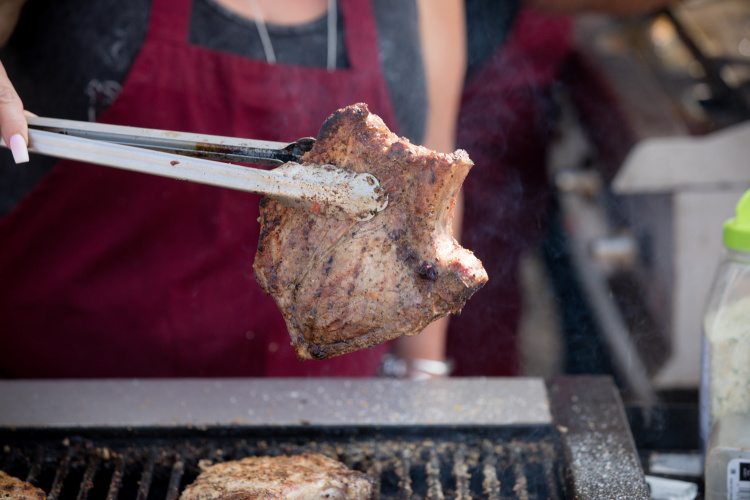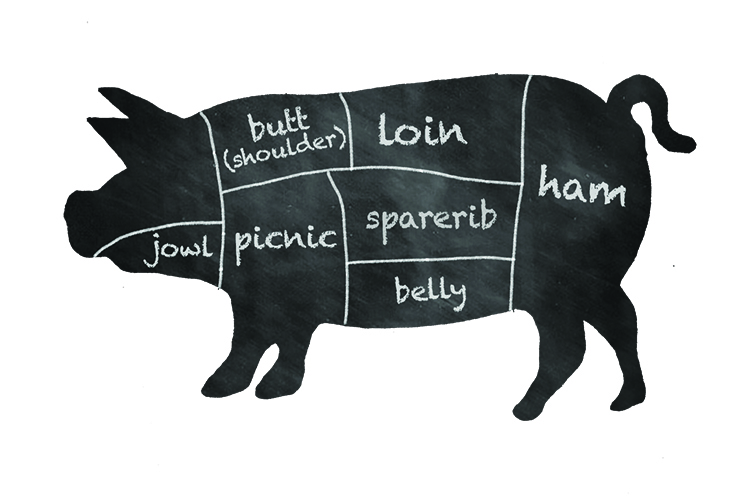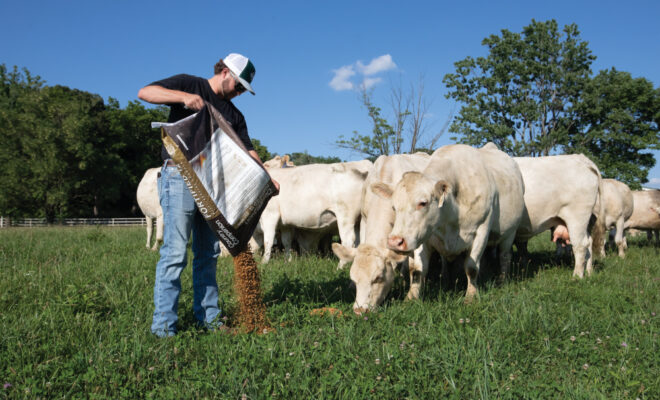Farm-to-fork meat purchases have grown, and people who own the chest freezer space lead the trend.
Throughout the state, cattle and hog farmers offer direct sales of beef and pork in bulk quantities that fit household needs and freezer availability. Those quantities can range from meat cuts packaged into small bundles all the way up to freezer-filling quantities of a quarter, half or whole hog or steer. With more meat cuts to try than weekends in the summer, experts share some often-overlooked cuts to add new flavor to this season’s grilling routines.
See more: Meat Selection 101: Tips and Tricks (VIDEO)

Pork Cuts Offer Blank Canvas
For a new take on a pork chop, buy it thicker and still attached to the bone, suggests Bethany Petentler, a student with Western Illinois University’s Leatherneck Country Meats, a business developed in 2019 out of demand for farm-to-fork meats. The program caters to local customers, offering bundles of pork cuts processed from hogs that Petentler and fellow students raised on the university farm.
“For grilling, we definitely prefer thick-cut pork chops. They are juicier and have more flavor,” says Petentler, also a member of the Collegiate Farm Bureau. “It is unusual to see bone-in pork chops at the store and a lot of people don’t routinely eat off the bone anymore. If people really want the flavor, they will go for the bone-in chop.”

In general, pork offers a blank canvas and an economical grilling option, says Brandon Klehm, meats judging coach and meat science outreach coordinator at the University of Illinois. He says pork accepts various rubs, spices, sauces and marinades to create interesting flavors on a meat at a price point attractive to experimentation before inviting friends to a barbecue.
In fact, try those sauces and seasonings on some oft-forgotten pork cuts like country-style ribs or a whole pork tenderloin. Klehm says country-style ribs contain no bone, making them more tender and faster to cook than traditional ribs. A whole pork tenderloin – marinated or dry-rubbed – makes for a quick, easy and extremely tender main dish from the grill.
See more: Farm Facts About Raising Cattle
Cuts Beef Up Mealtime
Klehm helps with the Grundy County 4-H Federation Cut Meat Auction, which annually sells 80 to 110 bundles of meat from livestock raised by 4-H members, Grundy County 4-H Coordinator Brooke Katcher says. The decades-old auction, held the last Saturday in September during the Corn Festival in Morris, generates around $5,000 for the county’s 4-H program from sales of mutton, pork and beef.

Speaking of beef, Klehm says a commonly overlooked cut from the chuck area of cattle includes flat iron steaks, a tender, flavorful and more economical cut of beef. He also recommends a skirt steak marinated in balsamic vinegar and garlic cloves before grilling. After cooking, slice against the grain for fajitas or a meal’s stand-alone protein.
For a slower pace, tri-tip cooks slowly on the grill, best away from direct heat. Likewise, sirloin cap steak, another slow griller, will add some challenge to the grill and offers a Brazilian flair with recipes readily available online.
See more: Farm Facts: Pigs

Use a Meat Thermometer for Flavor, Safety
Meat thermometers prove a must for a safe and flavorful grilling experience.
Follow temperature guidelines for degrees of doneness and don’t overcook. Contrary to popular belief, pork can have a pink center, Petentler says.
For optimal flavor, Klehm recommends cooking beef to an internal temperature of 135 degrees, or medium rare. For pork, he says that 145 degrees delivers the most tender, juicy result. For safety, always cook ground products to 165 degrees.
“It never hurts to let these cuts rest on a plate covered in tinfoil for five minutes after grilling,” Klehm says. “They will reach an equilibrium temperature for a more enjoyable eating experience.”




